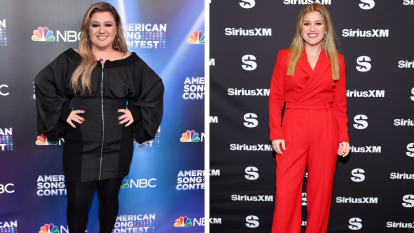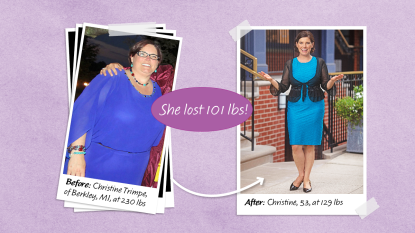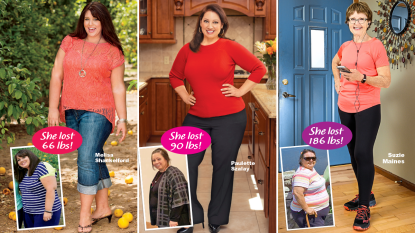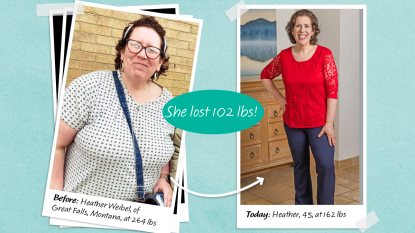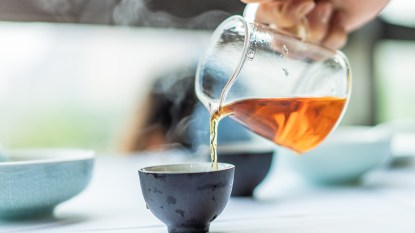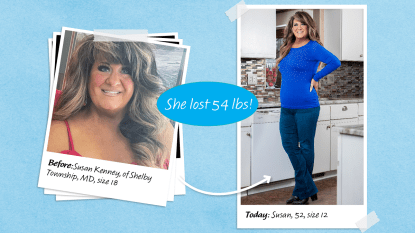New Twist on Walking Is Helping Women Lose Weight Faster: What You Need to Know About Rucking
One expert calls it "weight training for people who don't like the weight room"
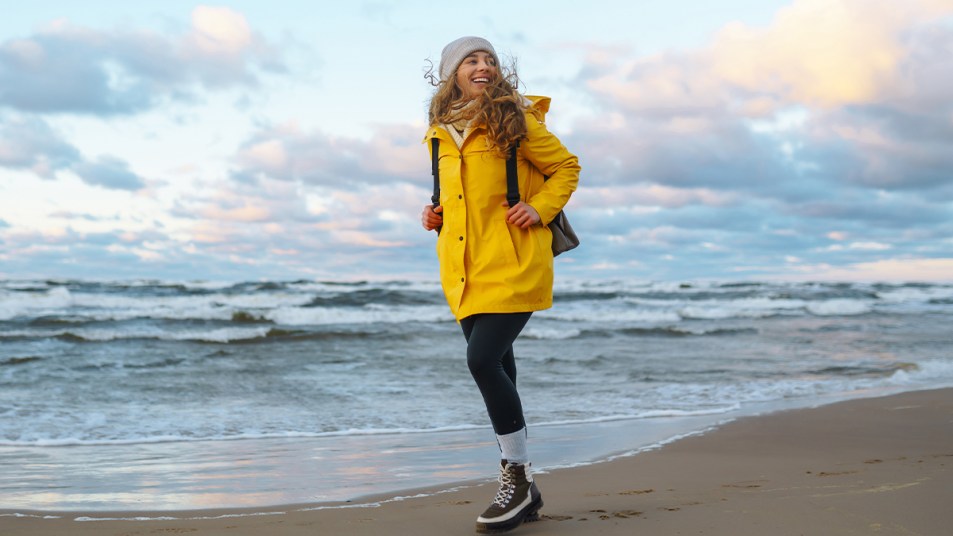
There’s a saying that women hold up the sky. And in truth, we do our fair share of holding: everything from heavy purses on our shoulders to toddlers on our hips. But now a growing number of women are putting their stellar carrying skills to work to transform their health in countless ways. It all centers on the trendy activity known as “rucking,” or weighted walking. “Rucking has a lot of positives,” says Charlie Seltzer, MD, the only physician in the country to specialize in all three certifications of obesity medicine, internal medicine and strength/conditioning. Keep reading to learn how to use rucking to improve your own health and weight. And don’t miss all the rucking success stories at the end.
What is rucking?
Rucking, or weighted walking, originated as a military activity. We can all picture soldiers who train by carrying heavy rucksacks filled with gear up a hill. But now civilians everywhere are giving this move a try because of its amazing health and weight-loss benefits.
Fun fact: In England, the activity of rucking is referred to with the slang “tabbing,” which stands for Tactical Advance to Battle. And any of us who have wrestled with unwanted pounds, joint pain or low energy likely feel ready to advance and defeat those particular foes.
How to start rucking
One reason for rucking’s popularity is how simple it is to get started. Just grab an old backpack from the closet and add a few books before taking a stroll or walking the dog around the neighborhood. Health guru Melissa Urban, co-founder of Whole30, is a big fan. She says, “If you can walk, you can ruck!”
Related: New Twist on Whole30 Is Helping Women Lower Cholesterol, Eliminate Pain & Lose Serious Weight
This exercise can be especially appealing for women who may feel judged in traditional exercise spaces. University of Nevada, Las Vegas professor Michael Easter researched rucking extensively for his book The Comfort Crisis. He says, “Rucking is weight training for people who don’t like the weight room.”
Plus, rucking outdoors delivers all the benefits we get from nature: fresh air, vitamin D–gifted sunlight, stress relief. In fact, The Global Wellness Summit just named “The Power of the Pilgrimage” as a top health trend for 2024, fueled by interest in trail hiking worldwide. And Dr. Seltzer reminds, “The most important exercise is the one you enjoy doing.” (See fitness experts’ advice on the best time to work out.)
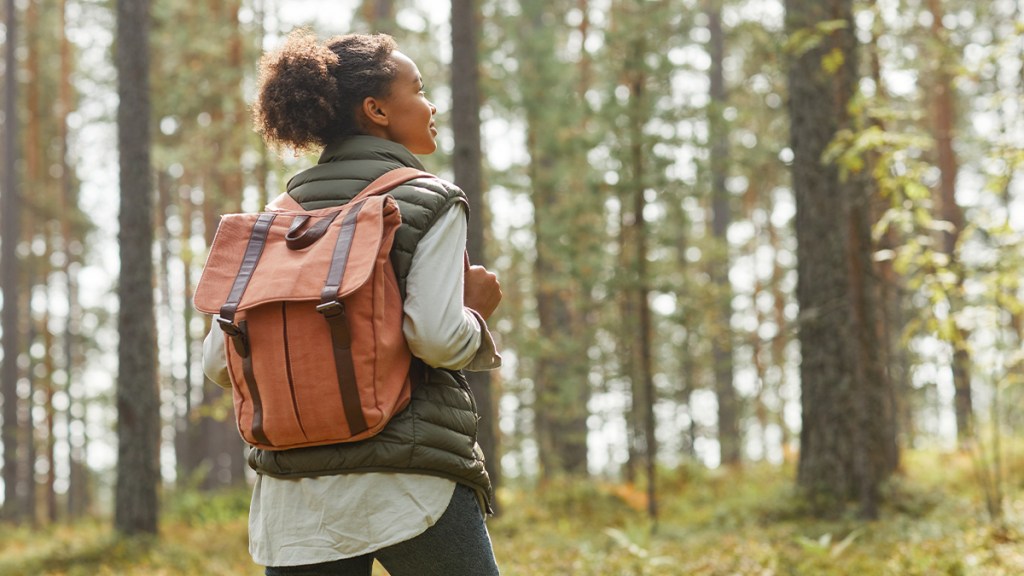
Top 4 benefits of rucking
1. Rucking boosts calorie burn
Dr. Seltzer confirms, “Rucking definitely burns calories. It’s good for cardiovascular health and core strength. And the added weight is going to help with bone density for menopausal women.” Indeed, rucking is believed to burn around three times more calories than regular walking.
In his studies, Easter found that people weighing 170 pounds and carrying a 20-pound pack burned 572 calories walking on flat terrain and 761 walking hilly terrain across 3 miles for 1 hour. (Visit GORUCK.com‘s Rucking Calorie Counter to estimate your own stats.)
2. Rucking helps speed weight loss
We know rucking is better at burning body fat and protecting lean muscle than running. In one study of rucking reported by Easter, participants lost 14% of their body fat (about 7 pounds) in just 12 days. As a bonus: They also dropped their “bad” LDL cholesterol by 29%.
3. Rucking improves balance to prevent injuries
In a University of Pittsburgh study, soldiers followed for a year were less likely to get injured from rucking compared to running or traditional weight lifting. Experts also estimate that rucking is 167% more gentle on knee joints than running.
4. Rucking boosts mood
This activity also taps into a host of feel-great health benefits that come from walking. We’ve all heard how exercise is good for our mood. But scientists continue to learn exactly why. One reason: Exercise triggers “good” gut bacteria to produce compounds called short-chain fatty acids that communicate directly with our brain, helping to calm inflammation, improve overall health and boost happiness. Harvard-trained Amy Shah, MD, shares, “It’s kind of like anti-inflammatory magic fairy dust. And how do you get it? You exercise.”
Related: Serotonin Boosting Foods Take Your Mood From Blah To Bliss — In 30 Minutes or Less!
Bonus health benefits of rucking
It moderates blood-sugar levels and is proven to quiet cravings. Walking has also been shown to reduce breast cancer risk by 20% and slash feelings of fatigue by 65% — more than drinking a shot of espresso, according to University of Georgia research.
That’s not all. Walking enthusiast Joyce Shulman, author of Why Walks?, reports on another recent study that concluded that nearly 111,000 deaths per year could be prevented if people added just one 10-minute walk to their daily routine.
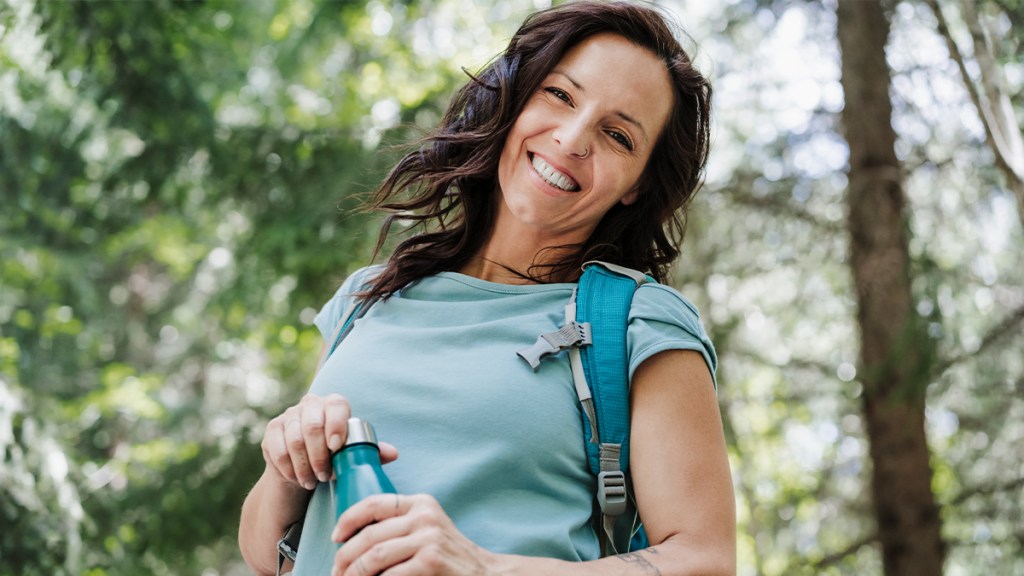
Keep reading to try rucking for yourself
Follow these gentle, get-moving recommendations and always consult a doctor before starting a new exercise routine…
1. Start small and slow
General guidelines often state that people can comfortably ruck about 10% of their body weight to start. But Dr. Seltzer says women can get benefits from adding as little as 5 pounds to their initial walks. Ruck for 5 or 10 minutes a couple times a week, and gradually work up in duration and ruck weight.
2. Keep packs close
The key is wearing added weight close to your frame, spread evenly and high across your back, rather than flopping loosely at your lower spine.
3. Mind your posture
Try to stand tall, without lurching (or straining) your neck forward. Dr. Seltzer says, “The backpack may press down on your shoulders, and you’ll get some spinal pressure, but that’s not necessarily a bad thing if you don’t have back pain, because that’s how bones get dense.”
Related: Fascia Exercises Are the 10-Minute Routine Helping Women Get One Size Smaller
4. Get the gear
Many ruckers start with makeshift bags but graduate to wanting equipment made specifically for the activity. Look for quality backpacks or weighted vests. They evenly distribute added weight to reduce pain and strain. Our top picks: GORUCK Ruck Plate Carrier bag 3.0 and the 10-lb. Ruck Plate insert for the bag.
5. Stay hydrated
When walking outdoors, it’s important to replace fluids and minerals lost from sweating. Try adding an electrolyte mix that contains magnesium, potassium and sodium, such as Liquid I.V., to water bottles. (Click to learn how an electrolyte water like Liquid I.V. can help with weight loss.)
6. Eat clean after a rucking workout
When rucking, Dr. Seltzer cautions against overworking yourself and eating back all the calories you just burned. When hungry, he suggests opting for lean protein, fruit and veggies to avoid triggering carb cravings and overeating. See our satisfying snack list below.
The best post-walk foods
Dr. Charlie Seltzer says, “The data is clear. You can’t rely on exercise alone to lose weight. You need good nutrition.” And getting adequate protein is key. Here are our top picks:
- Almased protein shake, with 24 grams of protein, plus vitamins and minerals
- Yoplait Protein yogurt cup, with 15 grams of protein, and no artificial colors or corn syrup
- Chomps beef stick, with 10 grams of protein from a 100% grass-fed/finished, non-GMO source
- Wonderful Pistachios, with 6 grams of protein per 1⁄4 cup, plus healthy fats
- Once Again Organic Peanut Butter, with 8 grams of protein per 2 Tbs. serving
- CheeseBits mozzarella pearls, with 7 grams of protein per serving
Real-life rucking success stories
Women are successfully rucking — and improving their health — all around
the world! Here, women share how they used this activity to reach their wellness goals.
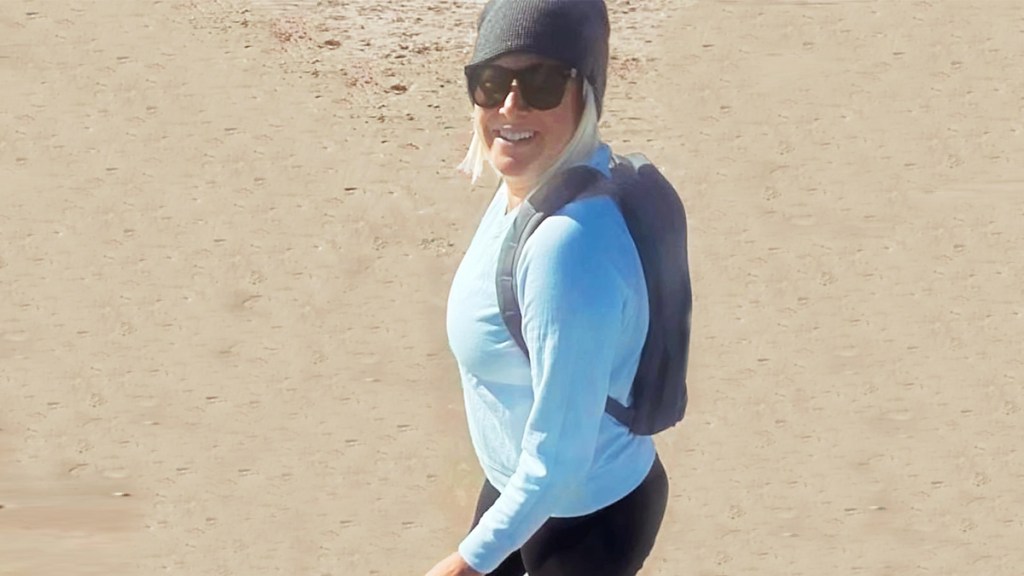
Lauren Key, 39, of Neptune Beach, Florida, started rucking with 10 pounds on her back and built up to 30 pounds. She says, “I’d never felt a ‘runners high’ before. Rucking was the first time exercise felt euphoric. It became addictive. It felt so good. I had a ton of energy.” Lauren lost 15 pounds in three months and 25 pounds total. “My body was melting fat,” she recalls. “My body never really snapped back after having my first child. I was going to yoga, exercise classes, taking walks, and none of that moved my needle at all. But as soon as I started rucking, it was a pretty significant weight loss. I could throw on a 10-pound backpack and push my son in a stroller. It was this perfect way to exercise on my own schedule.” Now Lauren has her 65-year-old mom rucking too!
Lucia Polla, who runs the Viva la Vita blog in southern Spain, lost 40+ pounds with weighted walking and saw her cardio fitness soar. “After struggling with my weight most of my adult life, rucking proved to be the perfect exercise for me,” she says. “It’s a peaceful, relaxing activity that also gives me a great workout. The natural setting and social aspects of hiking keep me motivated. I feel stronger, slimmer and healthier than I have in years!”
Michele Rice-Nelson, 53, in New York lost 115 pounds wearing ankle and wrist weights on walks and eating Nutrisystem meals. She reversed her prediabetes and improved her chronic pain, balance and mobility. “This made my day-to-day life easier. Never in my wildest imagination would I have thought that I could accomplish such a fantastic feat, and at my age no less!”
Sara Rodriguez, owner of Madrid Traveling in Spain, lost 30 pounds and improved her muscle tone. “I started for the scenery. Little did I know how that one spontaneous decision would completely transform my health and happiness. I added strength exercises during my rucks like lunges, squats, push-ups and planks once I was comfortable with the basic movements. Now, two years later, I feel stronger and more energetic than ever before!”
Shelley Marmor, founder of Tulum Travel Secrets, in Mexico, lost 20+ pounds in three months and built core strength. “I could feel myself getting stronger each time. The weighted pack helped increase the intensity, while the slower pace made it more manageable in the climate. I ended up completely transforming my body composition in a way I never imagined possible from walking alone.”
For more on walking, click through the links below!
Women Over 50 Are Losing 100+ lbs Without Dieting Just By Walking First Thing In the Morning
Pain Doctors Share Natural Ways to Dodge Lower Back Pain When Walking





